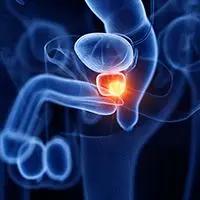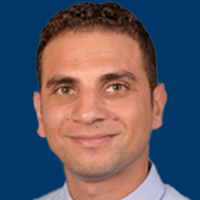Selecting Therapy for Steroid-Refractory Chronic GVHD
Dr Gooptu highlights how she selects therapy for a patient who is refractory to steroids for chronic GVHD and Dr Inyang notes the adverse events seen with these therapies.
EP: 1.Clinical Scenario: A 38-Year-Old Man with Ph+ ALL
EP: 2.GVHD Incidence and Pathophysiology
EP: 3.Conditioning Regimens for Stem Cell Transplantation
EP: 4.Risk Factors for Acute and Chronic GVHD
EP: 5.The GVHD Prophylaxis Landscape
EP: 6.Acute GVHD Presentation and Diagnosis
EP: 7.Assessment and Grading of Acute GVHD
EP: 8.Frontline Steroid Treatment for Acute GVHD
EP: 9.Education and Resources for Patients with GVHD
EP: 10.Clinical Scenario: Chronic Graft Versus Host Disease
EP: 11.Chronic GVHD Incidence and Risk Factors
EP: 12.Challenges with Early Diagnosis of GVHD
EP: 13.Frontline Treatment of Chronic GVHD
EP: 14.Steroid Administration for Chronic GVHD
EP: 15.The Steroid-Refractory Chronic GVHD Landscape
EP: 16.Selecting Therapy for Steroid-Refractory Chronic GVHD
EP: 17.Monitoring and Follow-Up of Patients with Chronic GVHD
Transcript:
Bonnie J. Dirr, APRN: Given the available options in clinical factors, what are some of the other considerations in terms of deciding the treatment for patients with steroid-refractory disease? You highlighted several factors, but are there any other pearls you would like to offer our audience, in consideration of making a selection for your patients?
Mahasweta Gooptu, MD: Yeah, this is a hot topic of discussion. How do you decide between 2 or 3 available agents? We do try to do it based on clinical manifestations, drug interactions, and consideration of toxicities. So clinical manifestations, we know belumosudil [Rezurock], for example, had responses in every organ system, but particularly in patients with oral symptoms, myofascial symptoms, joints, skin, and perhaps a little less so in liver and lung. So, I might use ruxolitinib [Jakafi] in patients who have liver involvement or in some patients who have lung involvement, although we now know that belumosudil [Rezurock] does pretty well with bronchiolitis obliterans—the response rate in the 30% range. In patients who have more of an inflammatory form of the disease rather than a fibrotic form, I would use ruxolitinib [Jakafi] rather than belumosudil [Rezurock], which is really more ROCK2 inhibitors with downstream effects on STAT3 and is particularly targeted at fibrosis in organs, whereas ruxolitinib [Jakafi] blocks the cytokine cascade. So in patients who are more inflammatory, I have seen better responses. Also, in patients who have JAK2-positive disorders, like myelofibrosis or MDS [Myelodysplastic syndrome] and PD overlaps with JAK2, we do see better responses with ruxolitinib [Jakafi], even for chronic GVHD [graft-vs-host disease]. So, that is a practice I adopt as well. There are a few nuances we can use, but I think we’re still feeling our way about which agent to use for which patient with the greatest efficacy.
Bonnie J. Dirr, APRN: Thank you. Dr Inyang, Dr Gooptu just very nicely highlighted the collaborative approach in how you streamline into not only assisting our patients and families, but you also assist in the management with us in terms of dose selection. When there are several factors of drug-drug interactions or other considerations, you’re always there to help work through those challenges with us and help us in terms of decision-making. Can you talk to us about some of the notable adverse effects [AEs] you’ve observed with some of these therapies as they have been emerging…perhaps looking at some of the therapies that were used and highlighted for CB and/or expand on this for our audience.
Eno-Abasi Inyang, PharmD, BCPS, BCOP:Most definitely. We talked a little bit about the ruxolitinib and belumosudil. For CB’s case and receiving ruxolitinib, in terms of both of these medications, I find that…patients…really do tolerate the medications pretty well. For ruxolitinib, for example, sometimes we’ll have patients who we really watch out for lipid elevations. I think sometimes it can occur even without ruxolitinib, but we can see triglycerides increase, as well as cholesterol. So it’s really important to monitor these lipids. I typically recommend baseline and then at least 8 to 12 weeks after therapy initiation. Another [AE] we always like to counsel about is the potential for a drop in counts—things like anemia, thrombocytopenia, and neutropenia. I haven’t typically seen it all too often in our patients. Sometimes it can occur here and there, depending on the dose and depending on the patient’s risk factors coming into therapy. But it’s always a good education point and something I always like to say to monitor for. That kind of goes along with risk of infections. With ruxolitinib and belumosudil, the risk for things like upper respiratory infections can be sometimes common in some [patients with GVHD]. A lot of this can be mitigated by making sure you have the appropriate prophylaxis on board, so making sure you have your Pneumocystis carinii pneumonia or pneumocystis jirovecii pneumonia prophylaxis, or antifungal prophylaxis if needed, and antiviral prophylaxis. With belumosudil, in the clinical trial, there were some [AEs] noted, such as fatigue, abdominal upset, diarrhea, and nausea. Again, with patients, I do find out that they tolerate it pretty well with the ruxolitinib as well, so fatigue is something I do counsel patients on. I’ll often hear [that they’re experiencing] fatigue on some of these medications, and a lot of times it’ll be due to the steroid that’s being tapered. So, those steroids can sometimes give you a boost of energy, [but] once that starts to taper and you’re on these medications, you can notice that fatigue will set in. [With] abdominal upset that can occur with belumosudil, we usually recommend patients to take this with food to help with absorption. If patients do take this with food, I find that the abdominal [upset] typically is a little bit minimal, if not there at all. I don’t get a lot of diarrhea or nausea when I talk to patients, but if they do have it, we always counsel that loperamide [Imodium] is an option to take over the counter for diarrhea. [For] nausea, we always like to make sure our patients have some type of antiemetic on board so they can take it if needed. If nausea becomes an issue, [we might] recommend taking the antinausea pill [approximately] 30 minutes before they take these medications. Other than that, the other [AEs] and things I like to say to monitor for are…the risk for the bone density. These patients are at risk for having bone loss and so forth, so [I] just recommend keeping watch of that and perhaps doing [a dual x-ray absorptiometry scan] if needed.
Bonnie J. Dirr, APRN: Thank you, Dr Inyang, for highlighting some of the AEs we see among our patient population and talking to us a bit about how you strive to help mitigate some of these [AEs]. It sounds like very good education and communication with your patients, very close monitoring and staying on top of lab work. Again, close follow-up tends to be [the] backbone in how we help manage some of these patients.
Transcript is AI generated and edited for clarity and readability.



